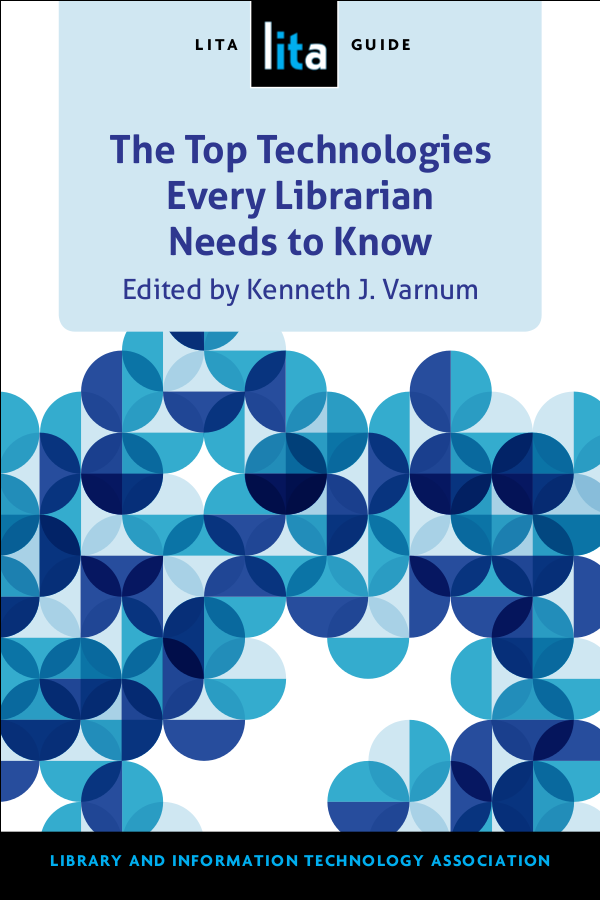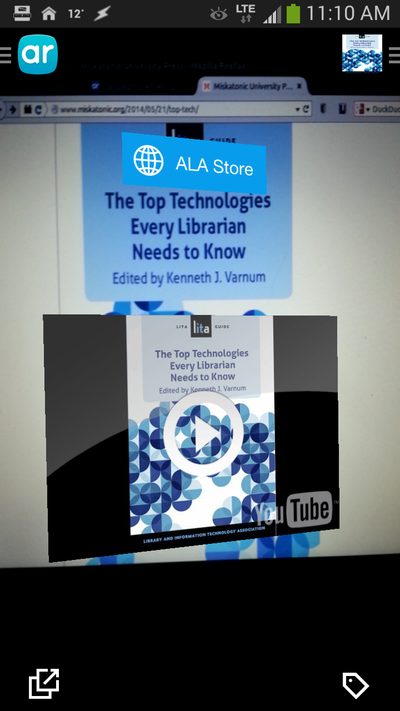I have a chapter titled “Libraries and Archives Augmenting the World” in The Top Technologies Every Librarian Needs to Know, edited by Kenneth J. Varnum and just published last week by LITA (the Library and Information Technology Association). I haven’t got my copy yet, so I haven’t read the other chapters, but they look full of interesting material by good authors, so you’ll want to investigate.
All of the links and quotes in the chapter, plus extra material, on my supplementary page Libraries and Archives Augmenting the World. See it for much more.
I open the chapter a short short story. Here’s a teaser, the very beginning:
Zoia was finishing her morning shift at the ref desk when the young man came up and said he couldn’t find a book on the shelf. He wasn’t wearing.
“Do you have the call number?” she asked. He held up his phone and showed the book in the catalogue: it was in the QCs, which were always hard to find. Her glasses recognized the small code on the page and popped up a small window to her left. The status showed it was on the shelf—at least, it wasn’t checked out, hadn’t been in seven months, and had been shelf-read three days ago when a wearing student assistant passed by.
“It should be there,” she said. “Come on, I’ll help you find it.” If the student was wearing she’d have helped him install the library’s app, because then he could have hit “Take me there” and it would have drawn arrows along the floor, up the stairs, and behind the offices, and then highlighted the section of the shelf where the book sat. Zoia herself didn’t need that, of course, so she dismissed the window. They chatted as they went looking. He was in science studies. She could see from her calendar that there was a talk from a visiting prof in that area on Friday; he hadn’t heard of it and was glad to know.
Back downstairs, two messages showed quietly: the second printer was out of paper, and George would be ten minutes late for lunch because the subways were still down from the storm two days earlier. She dismissed the printer warning—the students would see it—and sent a quick “no problem” to George. On the way out of the library, she saw the two student assistants, both wearing employee glasses: one was heading for the printer, and the other was charging out books by looking at student cards and the spines of the books.
Here’s the cover of the book. Install Layar on your smartphone or tablet and scan it to see Layar in action. This works on the print book too, of course.

This is what it looks like:

If you have the book in hand, also scan page 34 in my chapter (not page 29, which I tell you to scan—my error), and you’ll see more Layar-enhanced content.
I hope the chapter’s useful. If you do anything with augmented reality in a library or archives (or museum or gallery) I’d be interested to hear about it.
 Miskatonic University Press
Miskatonic University Press